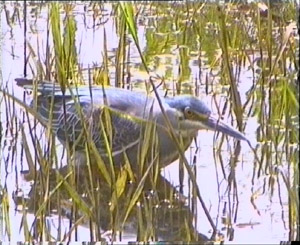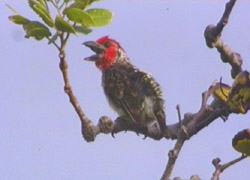birdtours.co.uk
Birdwatching Trip Reports from the Gambia
|
birdtours.co.uk |
|
A pre-dawn start saw us in a pirogue on our way accross the river to one of the bolongs on the far side where we had previously seen White Backed Night Heron, Fairy Blue Flycatcher and Finfoot. We were lucky enough to see the first two, but the Finfoot eluded us again. Osprey, White fronted Bee-eater, Blue Breasted and Pied Kingfishers, Goliath and Green Backed Heron were all there too, but a small boat is not stable enough to take video pictures with a long lens and so on this occasion our momentos are the memories.

A leisurely late breakfast on our return and then up to the peanut stores in the hope of a Cinnamon Breasted Bunting, but again we were out of luck. We also hoped for Brown Knecked Parrots but although we saw some fly by later in the day, we never got close enough to photograph them. Equally frustrating was a Verreaux's Eagle Owl calling not far from us, but because of the thick undergrowth, there was no way of moving towards it.
Later we moved in a small garden area which has always been good for small finches and waxbills and a Pigmy Sunbird put in an appearance for us too. Further out in the country, we spent some time trying to get good pictures of an exclamatory Paradise Whydah which was moving around the millet fields but for the first time on this trip, we were frustrated by the interest of the local inhabitants whose noisy presence kept the bird on edge and it never really settled. Once more one wished that we had longer in the country so that we could devote time to getting the photographs that we needed. Perhaps next time!!!!

The late afternoon evening was spend on the old Tendaba airfield which at this time of year is a large shallow lake with sticky glutinous mud around the edge. Although there were plenty of birds in/on the water most were too far away for photography, particularly in the failing light. I did get some poor pictures of Lesser Wood Hoopoes (Sorry they are now Black Wood Hoopoes) and spent some time watching a family group of Green Wood Hoopoes. All the books quote males as having a red bill, but it is very rare to see one with a red bill. My own suspicion therefore, is that as the birds form large family groups, all of whom are involved in feeding the young, the truth is that it is only the dominant male that has a red bill.